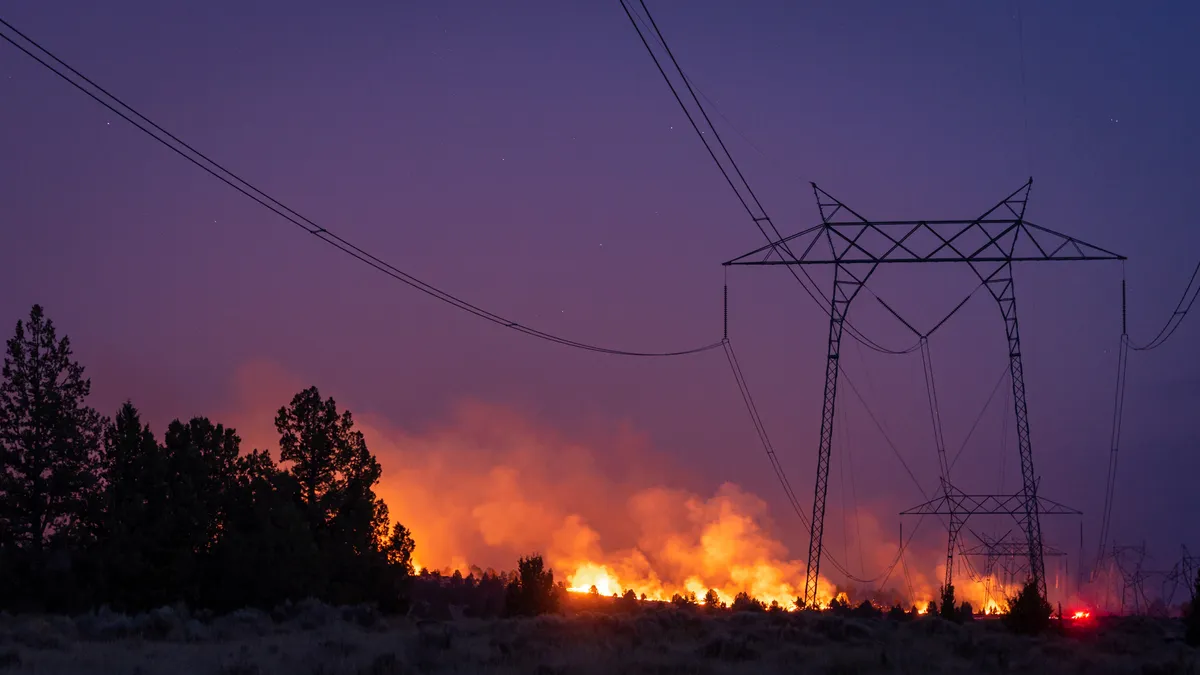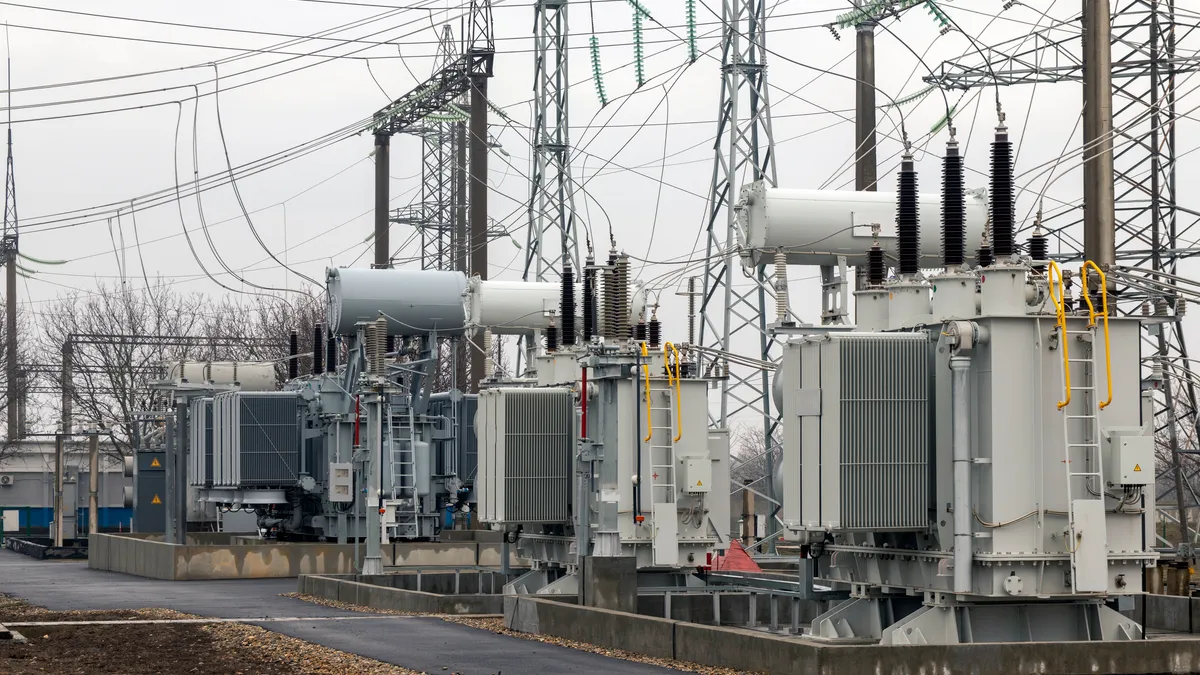At the end of last month, the Public Utilities Commission (PUC) made public the latest participant briefs in the proceeding that will decide the fate of the $4.3 billion merger of Hawaiian Electric Industries (HEI) and NextEra Energy.
The filings revealed a group of power sector stakeholders still deeply skeptical of the merger that would hand over control of the state's dominant electricity supplier to the Florida-based company.
Only the two companies filed with unconditional support for the merger proposal. Of the 24 intervenors, 20 filed briefs opposed to the deal. Two took no position, and two environmental groups supported, but want to add conditions on the deal NextEra has already rejected.
But the three most important participants — the three PUC commissioners — have yet to weigh in. Since the merger is a regulatory decision (Docket 2015-0022), their ruling on the deal is the only one that matters.
Now that final briefs are filed and hearings concluded, regulators are on the clock to settle on a decision by June 3, the date that the companies can contractually terminate the merger if it has not closed. Observers say much will depend on how the commissioners interpret their legal obligation to ensure any transfer of electric utility ownership goes to a company that is "fit, willing and able" to deliver on the state's energy goals.
“Throughout the entire process the commissioners had to sort through a lot of irrelevant information and drama, but, at the end of the day, will they be willing to deviate far from their Order No. 32695, initiating the proceedings, and its standards of review?” former PUC Chair Mina Morita told Utility Dive. “Will the PUC deviate from the regulatory standard of fit, willing and able?”
The companies pushed that point in their latest brief to the commission, arguing that the PUC's job is simply to ensure NextEra can meet that legal requirement and that the overall deal be "reasonable and consistent with the public interest.”
It's that last point — the public interest — that continues to divide opinions of the merger on the islands. While NextEra says it has the resources and know-how to get Hawaii to its goal of 100% renewable energy for electricity generation by 2045, opponents disagree with the company's approach and say it has mismanaged the merger approval process.
Where the deal stands
As participants filed their latest briefs in the proceeding, critical stakeholders told Utility Dive that NextEra could have handled the merger process better.
The company was conspicuously absent from the Maui Energy Conference last month, an event that made the merger its entire theme just a year before, and deal opponents say that was just the latest in the company's missteps.
"There is a strong sense that this deal is in a downward spiral,” said Earthjustice Attorney Isaac Moriwake, who represented Sierra Club as an intervenor throughout the proceedings. Sierra Club is among the twenty opponents of the merger.
“Almost nothing has gone right for NextEra since the evidentiary hearings began,” Moriwake said.
One of the biggest bombshells, he believes, was “snack-gate,” in which an email from HEI CEO Connie Lau was made public. In it, Lau reported interchanges between HEI and NextEra officials in which the acquisition of HEI was described as a “snack … on the way to their desired buffet luncheon to acquire other regulated utilities.”
The public relations damage was significant, Moriwake said. NextEra and HEI declined to comment on the merger process, saying their briefs to the commission sufficiently explain their case.
After the email controversy, Moriwake said NextEra made another mistake with last-minute concessions to the Hawaii Department of Defense. In exchange for the department removing itself as an opposing intervenor in the proceeding, NextEra promised rate benefits and made local management commitments.
The deal failed to create the public impression that momentum was shifting in favor of the deal, the Earthjustice lawyer said. Instead, the commission filed an official warning to NextEra against making such surprise “eleventh-hour deals.” PUC Chairman Randy Iwase also questioned whether “new and revised transaction commitments are in the interest of the public or a single party.”
Again, the public relations damage was palpable, Moriwake said. The PUC’s reaction also suggested last minute negotiations similar to those that completed the Exelon-Pepco deal would be ineffective in this case, he added.
Those mistakes, coupled with some damaging commission testimony from NextEra executives, reinforced a sense of "cultural disconnect" between NextEra's ultimate intentions and public opinion in Hawaii, Moriwake said.
In a series of cross-examinations, NextEra Hawaii President Eric Gleason left doubts about how cooperative and transparent NextEra could be with Hawaii’s regulators, he said. CFO Moray Dewhurst also raised concerns about whether NextEra would honor its commitment not to lay off HEI personnel for two years.
With evidentiary hearings completed, intervenors have until the end of the month to file response briefs. That leaves the commission about month to render a decision by the deal’s June 3 contractual deadline. That, Moriwake said, could be challenging in a deliberation with so many documents and complex questions to be addressed.
If the deal does not close by June 3, HEI can exit and collect a $90 million penalty plus $5 million in costs from NextEra. It can also agree with NextEra to extend the deadline and wait for a decision from the commission. But that may risk costing HEI shareholders the $95 million for what already may be a doomed deal, Moriwake said.
NextEra touts deal benefits
Don’t take our word that the merger is in the public interest, the utilities’ brief begins. Take it from the folks at DoD.
After negotiations with the Hawaii Department of Defense, HEI’s single largest customer, the department approved and accepted 95 commitments made by NextEra to the state.
The commitments, the brief argues, “exceeded those offered or approved in any prior Hawaii change of control proceeding…[and] compared very favorably with those in other U.S. utility change of control proceedings…”
The International Brotherhood of Electrical Workers Local 1260, representing over 1,300 members employed by HEI, also withdrew its objection to the merger. It said it was satisfied NextEra Energy is committed to union members, union contractors, HEI and its employees, as well as “to Hawaii’s clean energy future."
The 95 proposed commitments, supported by evidence from the proceeding, “far exceed the Hawaii legal standard of approval for the change of control,” the utilities' brief adds.
The commitments include benefits of nearly $1 billion in the first five years of NextEra ownership, including “an estimated $464 million in new rate reduction benefits” and “estimated economic benefits to the State of another approximately $496 million."
As “one of the most capable and successful renewable energy developers in North America,” NextEra pledges full commitment “to achieving a 100% RPS by 2045 and to accelerating and maximizing the use of cost-effective renewable energy including rooftop solar,” the brief promises.
Getting to 100% renewables cost-effectively requires backing by “a robust, investment grade balance sheet that can support the many billions of dollars of investment,” the brief argues. HEI’s balance sheet “is comparatively small, with just $3 billion of invested capital in rate base and credit ratings that fall within the lowest investment grade category.”
NextEra, however, “has exceptional access to financial markets,” the brief adds.
Its financial strength and experience in the electric utility industry make it “fit, willing and able to properly provide safe, adequate, reliable electric service at the lowest reasonable cost in both the short and the long term,” the brief concludes.
'Wake up worrying'
NextEra’s “extensive experience reducing reliance upon consumption of large amounts of oil through fuel switching to natural gas” will help Hawaii transition to a clean energy future, its brief argues. It can support moving the state from its current reliance on fuel oil for 70% of its generation to greater use of liquefied natural gas (LNG).
Hawaii Gov. David Ige (D), however, opposes Hawaiian Electric's current plan to import LNG for electricity generation, calling it a "distraction" from work needed to meet the state's 100% renewable energy mandate by 2045.
Critics such as the Sierra Club have latched onto that point, pointing to Florida Power & Light, a regulated utility owned by NextEra as a cautionary tale. FPL, critics say, is too reliant on natural gas and has attempted to stymie the growth of rooftop solar in its service area.
It is “NextEra’s Florida brand of 'clean energy transformation,’ which is neither clean nor transformative, particularly for Hawaii," Moriwake argues in his Sierra Club brief. Increasing the use of LNG and smart meters “does not fit Hawaii’s clean energy vision.”
NextEra and HEI declined to comment on critiques from opponents, saying their briefs speak for themselves.
While the merger's opponents remain steadfast, the most important input on the merger comes from state offices, such as the Office of Planning for the State of Hawaii (OPS), the Department of Business, Economic Development, and Tourism (DBEDT), and the Consumer Advocate (CA), according to Regulatory Assistance Project Sr. Advisor Jim Lazar, a veteran of such proceedings.
They are state agencies and their heads, like the PUC commissioners, are appointed by the governor, Lazar noted.
Gov. Ige last month reiterated his opposition to the merger.
NextEra’s commitments lack detail, enforcement mechanisms, and “are mostly conditional,” Ige told the Honolulu Star Advertiser. Few of the commitments address Hawaii’s clean energy transformation and “it is not clear how these would provide any added value or benefit to Hawaii.”
There is not a lot of difference in the observations from the state agencies.
The merger “does not provide significant and quantifiable benefits to Hawaii’s consumers,” according to the consumer advocate's brief.
NextEra “failed to provide sufficient support and enforceable commitments that truly guarantee customer participation in merger benefits while mitigating the many costs and risks,” the CA adds.
The almost $1 billion promised by NextEra rate reductions are “paltry, temporary, and not ‘guaranteed,’” the advocate's brief goes on. Other promises made by NextEra are “speculative” and offer “only temporary and limited rate relief.”
The commission should not approve the merger because it does not meet the Order No. 32695 standards of review, the consumer advocate concludes.
The change of control “is not in the public interest,” the DEBDT brief agrees. The proposal has “major flaws” including a lack of detail, unenforceable promises, and a lack of accountability measures to protect customers.
Many of NextEra’s 95 commitments “simply identify the need to comply with the law” or describe risk mitigations that “do not constitute incremental benefits” but simply “maintain the status quo.”
Few of the 95 commitments address in detail DBEDT’s foremost concern with how the merger would support the state getting to 100% renewables by 2045, it argues.
DBEDT “cautions” the PUC against approving the merger. HEI may need the support of an institution with deeper pockets, the agency said in its brief, but “rejection may be the only way to convince NextEra to finally put forward its best and final offer.”
That point — that rejection of the NextEra deal could open up better possibilities — was echoed in other state agency briefs, particularly the one from the Office of Planning Services.
The OPS brief, written by Georgetown University law professor Scott Hempling, points to a different option than dismissing the merger or extending the negotiation.
The commission should, first, dismiss the proposal from the “acquisitive, vertically integrated monopoly with no legal limits on its appetite." After that, the PUC should “return to its pre-merger path" and assess new ownership and operational models for the state's utility.
Commissioners should take the direction set out in their landmark “inclinations” order on the future of the state's utility and lead the state to new electricity providers and “a resource mix that suits Hawaii's needs, provided by companies selected for their merits.”
Hawaii wants an energy future based on “competition and choice” but NextEra will want to own “monopoly assets in a market while seeking competitive advantage in that same market,” the OPS brief argues.
“The vertically integrated, retail monopoly conflicts with at least three trends,” according to the OPS. It would be an obstacle to new distribution system technologies, to competitive bidding for central generation renewables, and to the advance of consumer and community experimentation with “alternatives like micro-grids, municipalization, and cooperatives.”
By continuing the dominance of a regulated utility in the state, NextEra would prevent Hawaii from finding new market structures and new mixes of competition, monopoly, and regulation that “produce the most customer-responsive array of distribution services at reasonable cost…”
NextEra's offer of a $568 million control premium will not make up for the “displacement and deterrence” it will create, the OPS brief argues. In the guise of experienced guidance, it would “teach HECO how to design requests for proposals, how to assess competitors' bids, how to favor those competitors that NextEra favors, and how to favor NextEra.”
That teaching would be done at ratepayer expense and HEI shareholder risk and the end result would be the achievement of “goals in conflict with the diversity and competition the Commission hopes to achieve.”
“HEI is a risk-minimizer…[while] NextEra is a risk-taker,” the OPS warns the commission. “Vote yes, and every day the Commissioners will wake up worrying…”
Down to the wire
It is possible, but not likely, that the commission will finish its deliberations by the June 3 deadline set forth by the merger agreement, observers including Morita and Moriwake told Utility Dive.
One way or another, “there has to be a major paradigm shift,” Morita believes. The options are “to approve the merger to a company that has embedded the continuous improvement model and financial strength to take on the challenge, or stumble along with the status quo.”
The commission, she said, has the regulatory authority to find NextEra “fit, willing, and able” and the deal “reasonable and consistent with the public interest.”
But the regulators could also make “a political decision rather than a regulatory decision,” and reject the deal. That would make the PUC little more than “a rubber stamp for the governor, who has ignored the cost, economic, and technical challenges of getting to a 100% renewables,” Morita said.
If the commission does not reach a decision by June 3, observers say, there are three broad possibilities.
One is an agreement that extends the time frame, similar to the last-minute deals that stretched the Exelon-Pepco proceeding in D.C. Another is a negotiated termination that provides HEI some remuneration but eliminates its risk and allows NextEra to walk away. A third is that NextEra simply goes home and pays the fine.
While the final two options would be a significant embarrassment for NextEra, which has worked to close this deal since Dec. 2015, financial analysts including Macquarie Research, Barclays Capital, and Wells Fargo Securities, have speculated that one of them could appeal to the company if it cannot close the merger by its stated deadline.
In February, a Wells Fargo analyst report warned that "NextEra has made clear that they are willing to walk away if they view Hawaii’s terms to be unreasonable — and this philosophy could very possibly extend to delays beyond the June 3 date."
NextEra declined to comment on these possibilities.
A NextEra exit would not trouble many of the state agencies. Such a move "opens up options,” the OPS brief argues.
While the status quo with HEI is not satisfactory, “NextEra is not our only option,” OPS adds. “Opening the door to others will attract diverse options. By rejecting this transaction, the Commission can create opportunities for those options to appear.”
If NextEra were out of the picture, the commission "can learn about the alternatives,” OPS writes. It “can open an inquiry, inviting others to explain in public what they can offer Hawaii."
But despite the opposition in the state, the deal may yet be completed, Lazar reminded Utility Dive. He has been thinking about the last minute machinations in the recent Exelon-Pepco merger that led regulators to approve a deal similarly rejected by intervenors.
“Never underestimate the skill and persistence of a salesman when there are three commas in the selling price, and two commas in the salesman's commission,” Lazar said.




















